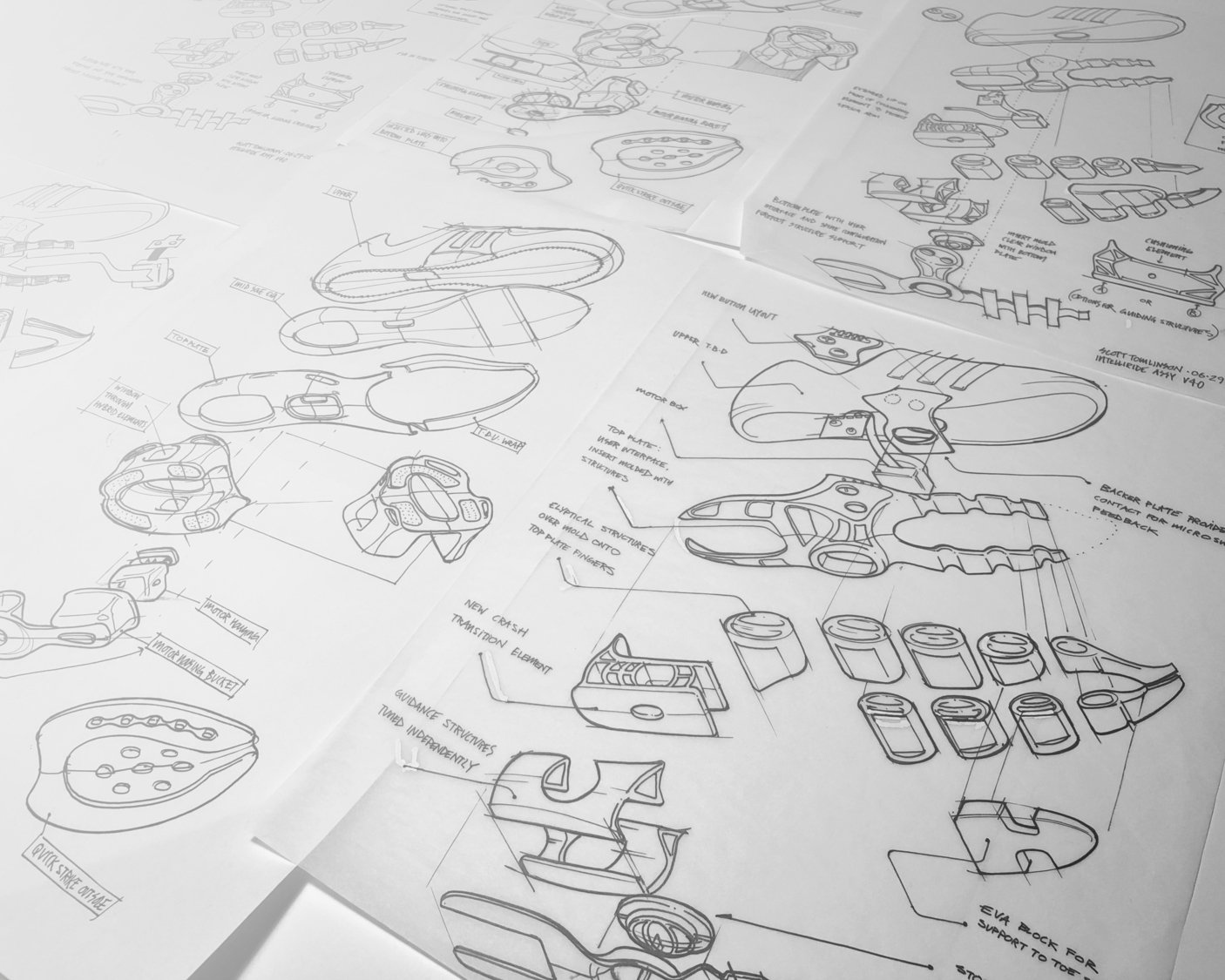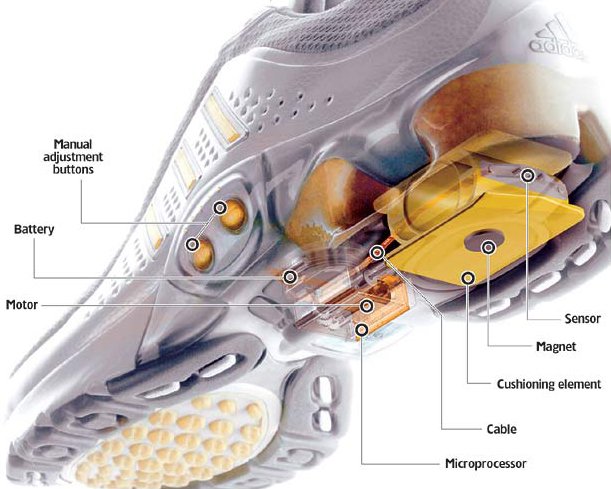Lost Tech: adidas_1
The World’s First Intelligent Shoe?
Words: William Penny
Footwear has long been a vessel for designers to explore what they think the future might look like, whether it’s outlandish speculative visions or industry changing innovations designers use technology to present us with the future, some ideas stick, and some don’t. Our latest series Lost Tech focuses on the ideas that didn’t. Whether it’s because these ideas were ahead of their time or just downright ridiculous, this series investigates the designs for the future that never quite fulfilled their potential.
As the 20th Century drew to a close and the new millennium dawned there was growing hysteria around the “Y2K scare” and many bought into the idea that the new millennium would bring with it a computer induced apocalypse. Many of the computer systems that had been created pre-millennium represented years with only two digits, meaning that the incoming 00 would not distinguish between 1900 and 2000. Many experts theorised that this could have disastrous consequences for global industries. The confusion of the Y2K scare led people to stockpile and withdraw their savings from the banks and induced a general distrust in computers and technology.
After the turn of the new millennium and once the Y2K fear had subsided, Adidas engineers Christian DiBenedetto and Mark Oleson were tasked with bringing to the market a running shoe that would bring science fiction to reality and possess the ability to change itself to the dynamic needs of the runner. In 2005, after 4 years of working on the project in secret, Adidas delivered on their promise of the world's first ever intelligent shoe, the adidas_1. The computerised shoe had been designed to sense, understand, and adapt to the wearer's unique gait over a variety of soft and hard surfaces. Fitted with a microprocessor, the shoe would be able to analyse live data and adjust the cushioning system in conjunction with the weight of the runner and the hardness or softness of the terrain. The sleek silhouette of the shoe which first debuted in a white/silver/gold colourway was complete with two buttons and a series of LED lights to the midsole, indicating that this was a shoe from the future. The shoe was released alongside the infamous commercial ‘Hello Tomorrow’ directed by Spike Jones with accompanying music by Squeak E. Clean and vocals by Karen O. In the years to follow adidas would update the software with Intelligence Level 1.1 and introduce several new colourways to the model, the shoe was even adapted for the court with the adidas_1 BB basketball shoe which was worn by NBA player Tim Duncan.
So, how did it work? Using technology that would today seem pretty standard, sensors in the shoe would measure the compression distance in the heel at a rate of 1,000 times a second and send the data to a microprocessor encased within the sole of the shoe which would determine the necessary adjustments for optimal cushioning. A 6,000 RPM motor controlled a steel wire which connected the front and back of the heel plates would tighten or loosen the tension to create cushioning which adapted to the needs of the runner. Pretty remarkable for the time.
The adidas_1, however, was not the first attempt at creating a computerised shoe, the combination of running shoes and personal computers had been in the back of designers’ minds for years. In 1984 adidas released the Micropacer, the adidas_1’s less practical and more gimmicky predecessor, and two years later Puma followed suit with the release of their RS Computer shoe. While the unique look of these shoes has earned each pair a reissue, the shoes clunky integration of technology left a lot to be desired. The adidas Micropacer was heavy and sacrificed breathability to accommodate technology which measured distance, step count, and calories burnt, while the Puma RS Computer Shoe needed to be plugged into an accompanying computer programme before giving you any readings. Fred Lebow, president of the New York Road Runners said of the Micropacer, “since runners can already figure out most statistics using some simple formulas and a $10 digital watch, the shoes' sole attraction may be snob appeal." A significant difference between the Micropacer and the adidas_1’s is that the former was marketed towards upwardly mobile “yuppies” with not much interest in running and a lot of interest in spending on the newest technology – a novelty designed to remedy the downward motion of the trainer market. By 2005, however, the adidas_1 was being marketed towards actual runners, with the shoe actually serving a purpose that benefited its user in a practical sense.
While this may not have been the first attempt at bringing a computerised shoe to the market, it was indeed the most integrated and most successful, or so it seemed at the time. With retail sitting at $250 (more than most were prepared to spend on running trainers at the time) sales were slow and the model was eventually discontinued, restricted to exist within the collective memory of sneaker enthusiasts worldwide. While the adidas_1 exists proudly as an example of the potential of the hybridisation of trainers and computers, it was perhaps too ahead of its time for its own good. Technology now moves at such a rate that products which were once trailblazing can quickly become obsolete. Advanced technology will always be replaced by something smaller, faster, and more powerful, and what came before it will be confined to the archives forever, or at least until its next reissue.






